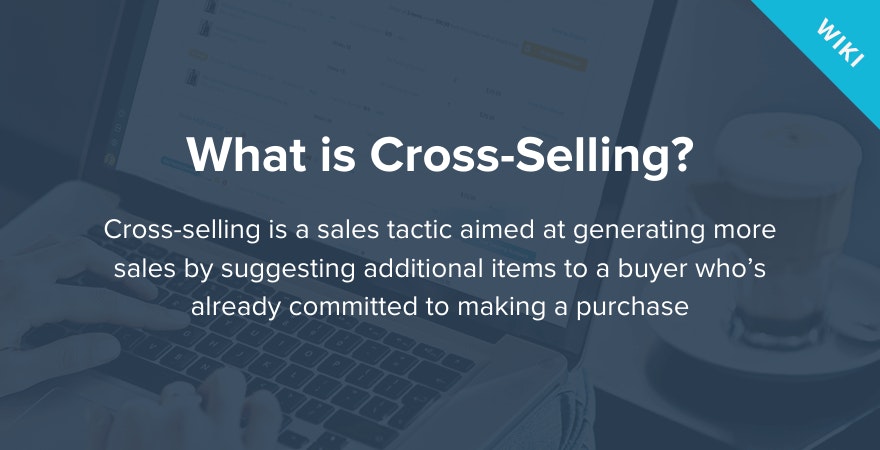
交叉销售



What is Cross-Selling?
Cross-selling is a sales tactic aimed at generating more sales by suggesting additional, related or complementary items to a buyer who’s already committed to making a purchase. The best way to make sense of this practice is through the iconic McDonald’s phrase “Would you like some fries with that?”.
交叉销售vs. Upselling: What’s the Difference?
和交叉销售的目标upsellingis to maximize the value of a purchase as well as to improve the customer’s buying experience by creating additional value. While cross-selling focuses on promoting additional products from related product categories, upselling is a sales practice that encourages customers to purchase higher-end versions of that same product or to pay for upgrades and extra features.
The difference between cross-selling and upselling tactics in an eCommerce setting would be:
- If your customer is buying a laptop and you’re using visual prompts on the product page or during checkout to encourage her to also purchase a mouse, that’scross-selling.
- If your customer is buying a laptop and you’re using visual prompts on the product page or during checkout to entice her to also purchase a 5-year warranty, that’supselling.
交叉销售in Ecommerce
Cross-selling is one of the most effective sales strategies in eCommerce, as it focuses on introducing similar items to customers who are currently viewing a product on the site or have already added it to their shopping cart. Correctly implemented cross-selling techniques feel natural and improve the customer’s buying experience by showing them complementary items that can increase the value of the initial purchase. For example, by pairing a fountain pen with ink cartridges, you’re not only increasing your odds of generating more profit from the same customer, but also showcasing the breadth of your product catalog as well as helping the customer to find everything she needs or indeed realises she needs.
Examples of Cross-Selling in Ecommerce
The majority of leading eCommerce retailers employ cross-selling tactics. For instance, Amazon’s “Frequently bought together” and “Customers who bought this item also bought” suggestions are extremely effective and reportedly generate as much as 35 percent of their revenue. Examples from other retailers include “Shop the look” and “You may also like” product suggestions.
The biggest pitfall with cross-selling in eCommerce is that you might upset a customer with irrelevant offers. Ensuring that you only promote the right products at the right time is key. Therightproducts often means items that are necessary or compatible with whatever is in the customer’s shopping basket.
Cross-selling examples could be:
- Suggesting to add HDMI cables if a customer is purchasing a HD ready DVD player.
- Prompting a customer who’s buying a pillow set to also add pillow covers.
- Showing top selling vinyl records to someone who’s about to purchase a vinyl player.
How to Cross-Sell?
交叉销售是iden第一步成功tifying complementary products and creating related offers. As with many other aspects in eCommerce, the timing and positioning of these offers need to be tested for maximum yield. However, the common practice is to implement appropriate cross-selling options on product pages, during checkout and infollow-up email campaigns.
Frequently utilized cross-selling tactics include:
- Bundling.Try packaging items that naturally go well together, such as digital camera, memory card and camera case, to maximise your profits and ensure the customer is aware she needs all three items for proper use of the initial purchase. To add an additional layer of appeal to your bundle promotions, offer eye-catching package discounts.
- Visual aids.This tactic is particularly relevant to fashion and lifestyle products, where customers are primarily driven by visual cues. Employ videos and high-quality product images to demonstrate how the product looks and functions in real life and prompt the customer to buy the whole package instead of just purchasing a single item. Examples of this technique include “Shop the look” option for clothes or “Shop the interior” for furniture pieces.



Want to Learn More?
- 10 Ways to Increase Average Order Value
- What Should You Sell Online?
- How to Market a Product: 18 Effective Marketing Tips to Skyrocket Sales
- 10 Online Stores to Use as Inspiration for Your First Store
Is there anything else you’d like to know more about and wish was included in this article? Let us know!